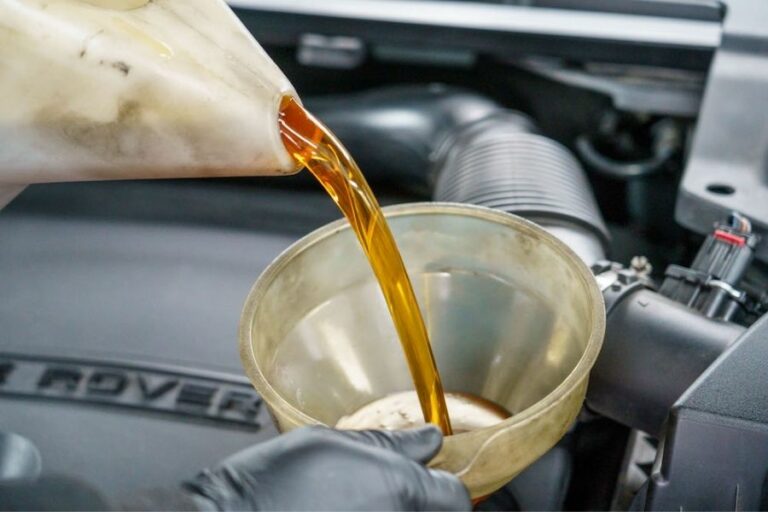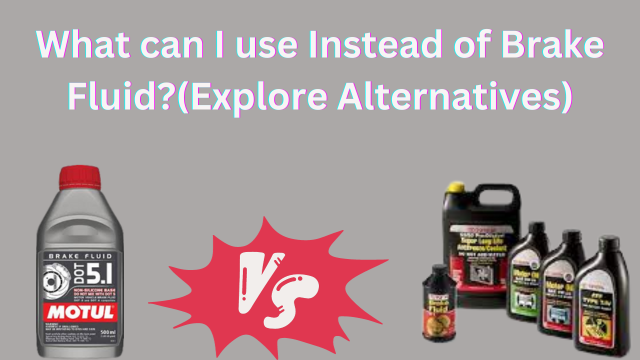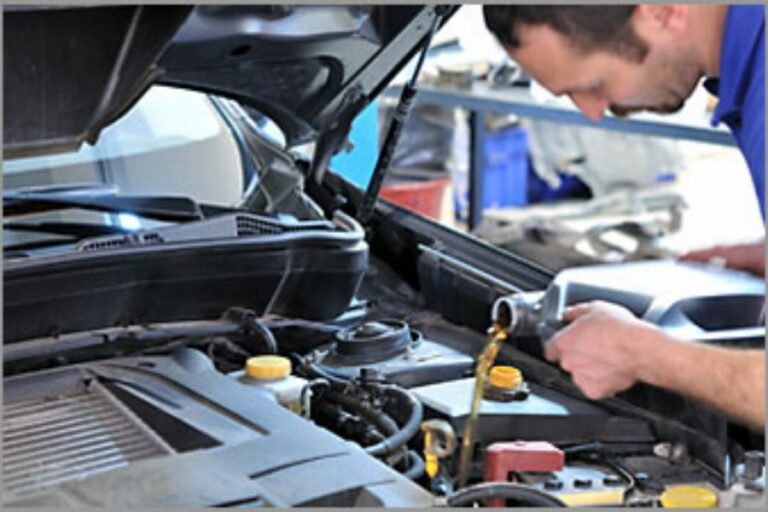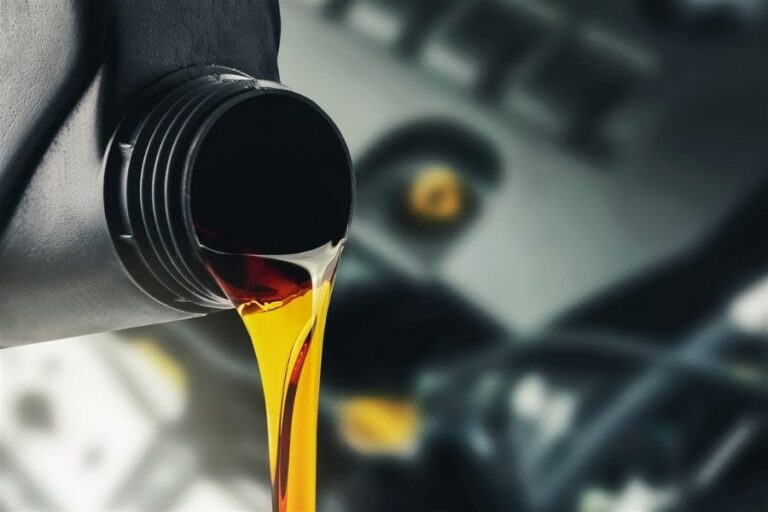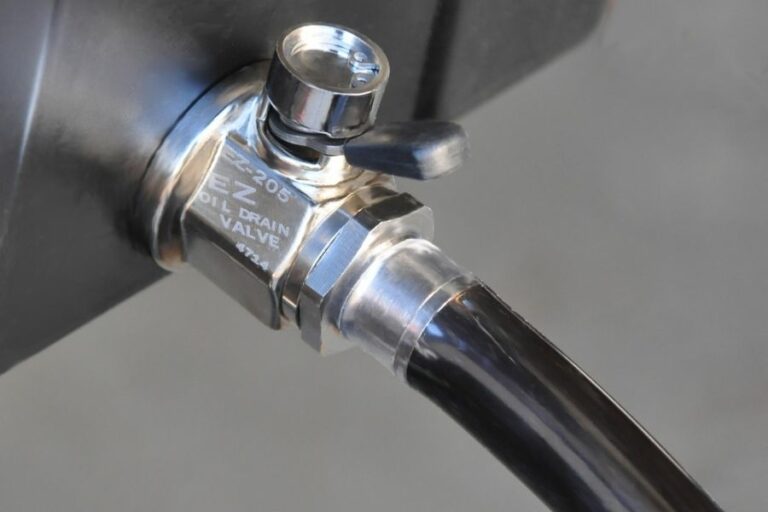Clutch Fluid vs Brake Fluid: Are they the Same or Different
The performance of any vehicle depends on the clutches and brake systems. These systems are incomplete without the use of clutch and brake fluids. Here we discuss the major difference between clutch fluid vs brake fluid and also tell which one is best for your vehicle.
Is clutch and brake fluid the same, or is there a difference? The general answer to this question is yes. Both fluids are the same. Clutch fluid is not a new, different chemical substance. Instead, it is the same brake fluid that is poured into the master cylinder of the clutch.
Clutch fluid plays its role in having effective suspension by changing the gears smoothly. In comparison, brake fluid helps stop the car or slow down the speed by exerting slight pressure on the brake pedal. So, maintaining a sufficient level of these fluids is required for the adequate performance of any vehicle.
In this article, we will examine the functioning of brake and clutch fluid in detail and help the reader understand their importance. We will also guide you about the warning signs to determine the fluid-related issues before time. So, stay with us.
Clutch Fluid Vs Brake Fluid: Knowing Both Mechanisms
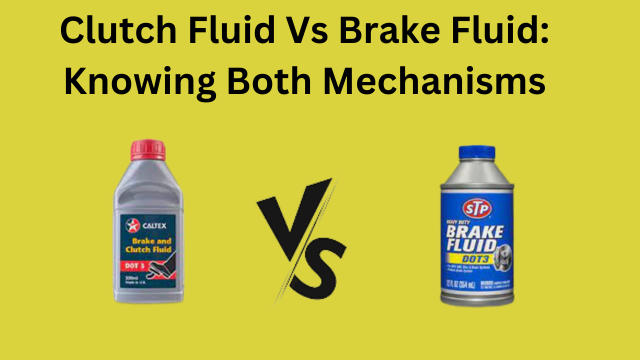
There is no difference in the chemical composition of these fluids, as the same fluid is used in brakes and clutches. However, its role in both hydraulic systems makes it different. So, let’s see the mechanism of the clutch and brake fluids one by one:
Brake Fluid for Brakes Mechanism
In brakes, when a person applies pressure on the brake pedal, it is shifted towards the brake pads with the help of brake fluid. Brake pads, in reaction, slow down the speed by compressing against the rotor. So, by applying little force, you can stop your vehicle. This fluid can bear hot temperatures because of the high boiling point and keeps the brake working efficiently without causing overheating problems. Furthermore, it provides enough lubrication to prevent corrosion of the brake parts.
Clutch Fluid for Suspension
In the case of clutches, when pressure is applied on the clutch pedal, that force is transmitted from the clutch master cylinder towards the clutch slave cylinder with this fluid. This way, you can change the gear smoothly while driving the vehicle.
In short, there is a considerable difference between the mechanisms; brake and clutch systems still contain the same fluids.
Simple Table for Brake Fluid vs Clutch Fluid
| Property | Clutch Fluid | Brake Fluid |
| Boiling point | 170-180°C | 230-250°C |
| Viscosity | 1.5-2.5 cSt at 100°C | 1.5-2.5 cSt at 100°C |
| Color | Amber or yellow | Colorless or pale yellow |
| Base | Glycol ether | Glycol ether |
| Compatibility | Compatible with all clutch systems | Compatible with all brake systems |
| Recommended change interval | Every 2 years or 24,000 miles | Every 2 years or 24,000 miles |
Different Types of Clutch and Brake Fluids
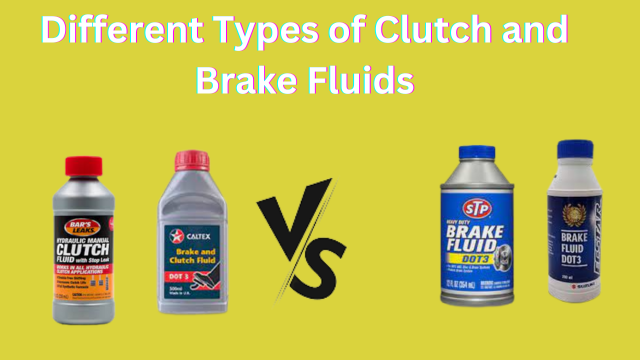
The market offers clutch and brake fluids in various forms, so you need to understand the difference between these types before purchasing any particular type. Here are the following categories of these fluids:
- DOT 3
- DOT 4
- DOT 5
- DOT 5.1
We can divide these types into the following two main categories:
- Glycol Based Fluids
DOT 3, DOT 4, and DOT 5.1 fluids come under this category, and they all are hygroscopic, which means they tend to retain water and absorb moisture from the surroundings.
This nature makes them less stable, and the quality deteriorates with time. When water increases in the fluid, this addition reduces the boiling point and causes overheating problems. So, one must replace the old fluid with the new one after regular intervals recommended by the car manufacturers.
Furthermore, there is a difference between their boiling points. DOT 3 has a lower boiling point than DOT 4. DOT 5.1 has the same boiling point as DOT 5, which is silicon-based. You need to select the one compatible with your vehicle’s system.
- Silicon Based Fluids
DOT 5 comes under this category, which is non-hygroscopic. This fluid doesn’t absorb moisture from the surroundings, which makes it more stable than glycol-based fluids.
The boiling point is also high, which means it is best for high-performance sports vehicles, motorcycles, etc. It is best to handle high temperatures in case of fast-speed rides. However, you cannot use it for vehicles with ABS, and you cannot use it in combination with other types of fluids.
Factors to Consider for Selecting Brake Fluid
Not every type of brake fluid is suitable for every vehicle. The performance of any car depends on selecting suitable types. Furthermore, you cannot mix two different types of fluids at a time, as this will result in a reaction because of different chemical compositions.
This contrast will destroy the system parts and adversely affect the performance. So, one must consult experts in selecting any single type of fluid. The other option is following the guidelines set by the car manufacturers.
You can also make this decision by yourself by considering some factors. We will help you in making a rational decision regarding the choice of clutch and brake fluid with the following guidelines:
- One must check the compatibility of the fluid type with the vehicle’s hydraulic system. Some cars only allow silicon-based fluid, while others can use both glycol and silicon-based fluids.
- Follow the manufactured guidelines in selecting any particular DOT 3, DOT 4, and DOT 5.1 grade. All these are glycol-based with different boiling points, so we cannot mix them.
- Consider your driving style before choosing any fluid. If you reside in hilly areas where brakes and changing gears are more frequent, you must use fluid with high boiling points. For example, DOT 4 and DOT 5.1 are great for meeting such requirements without causing overheating issues.
- Never try new or unknown brands where you are not sure about the quality of the brake fluid. Always go for reputable stores to get these fluids.
- For expert driving skills like racing cars, one must look for specific types of fluids designed to meet such exceptional performance.
Red Flags of Fluid-Related Issues
You can save yourself from serious outcomes or any significant repair cost by examining various red flags of fluid-related issues. Let’s have a look at these signs:
Softness of Pedal
Whether it is a clutch pedal or brake, it must feel tight when you press. In case of a spongy feeling on applying pressure, this may be linked with a lower fluid level or air in the car’s hydraulic system.
Hard to Shift Gears
If you face difficulty shifting your gear while driving, this may be linked to lower clutch fluid. Or, the system may have air acting as a hurdle.
Lower Brake Response
The brake must give you a quick response. If you press the brake pedal and the car does not stop quickly and takes time to respond, you must get it checked by a mechanic. The brake fluid may become green and destructive for brake parts, or there may be leakage issues.
Remember, if these issues remain unchecked, they will lead to severe accidents.
Maintenance Requirement for Clutch and Brake Fluids
Like other parts of any vehicle, these fluids have some maintenance requirements. You need to follow them for the adequate performance of brakes and gears.
- Check the level of these fluids by inspecting the brake and clutch fluid reservoirs. In the case of the lower level, refill it with the right type of fluid that your system already has.
- Follow the maximum line, and don’t pour extra fluid that crosses that line.
- Make sure there is no leakage by expecting the hydraulic system. Check up the wet areas, if any, as they may indicate leakage.
- Observe any changes in the brake pedal’s tightness or the gears’ changing. Check the vehicle thoroughly with an expert in case of loss, soft brake pedal, or difficulty changing gears.
- Change the fluid immediately when it gets contaminated or changes its color.
- Remember to remove the old fluid altogether before pouring new fluid, and use only a clean funnel to refill fluid into the system.
FAQs About Clutch Fluid vs Brake Fluid
What is the right time to change the old brake or clutch fluid?
Every vehicle has guidelines set by the manufacturers, and there is no hard and fast rule for changing such fluids. Generally, many suppliers recommend replacing old fluid after every two years. However, the actual time interval depends upon the vehicle’s usage, driving style, etc.
What happens when my vehicle’s clutch or brake fluid leaks?
The leakage of these fluids is extremely dangerous, as the brake system will not work properly in the case of low brake fluid. You cannot stop the car with a lower brake fluid level. Likewise, clutch fluid is necessary for suspension. With the leakage of this fluid, you cannot change the gears smoothly while driving. So, one must be careful in maintaining the right level for these fluids.
Does my car have clutch fluid?
It depends upon the model of your vehicle and its system. If the vehicle has a hydraulic clutch, it must have this fluid. Only those vehicles that have manual transmission have this fluid.
Bottom Line
Brake and clutch fluids are crucial for smooth brake and transmission systems. You can control the speed and gears better with the right level of these fluids. All the above-mentioned clutch fluid vs brake fluid aspects are enough to clear your mind about the similarities and differences between these fluids.
You need to understand the different types of these fluids and make the right choice compatible with the vehicle’s system. Remember to strictly follow the maintenance guidelines that keep these fluids in the best condition without getting leaked.

